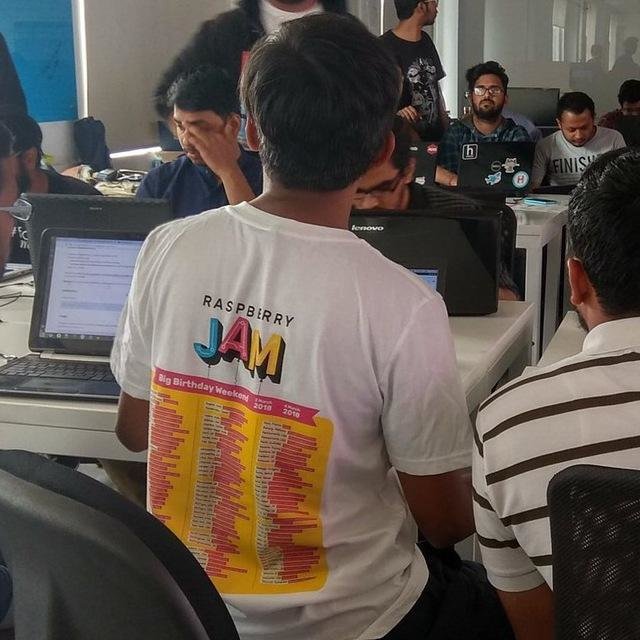Machine Learning
The what, The when and The how







The
what
The what
- Arthur Samuel (1959) said that machine learning is the field of study that gives computers the ability to learn without being explicitly programmed. The goal of machine learning is to develop programs that learn from experience, automatically improve the performance and adapt to new environments over time
-
Machine learning techniques are well suited for real life problems that use methods to extract useful information from complex and intractable problems in less time
-
They can be tolerant to data that is inaccurate, partially incorrect or uncertain
-
These methods can be used to construct models and make predictions
The
why
The why
- Machine learning is programming computers to optimize a performance criterion using example data or past experience
- There is no need to “learn” to calculate payroll
-
Learning is used when
- Human expertise does not exist (navigating on Mars)
- Humans are unable to explain their expertise (speech recognition)
- Solution changes in time (routing on a computer network)
- Solution needs to be adapted to particular cases (user biometrics)
The why: Applications
- Retail
- Financial Banks
- Stock Market
- Medicine
- Telecommunications
- The World Wide Web
The why: Applications. More
-
Machine learning is preferred approach to
- Speech recognition, Natural language processing
- Computer Vision
- Robot Control
- Computational Biology
-
This trend is accelerating
- Improved Machine Learning Algorithms
- Improved data capture, networking, faster computers
- Software too complex to write by hand
- New sensors/IO devices
- Demand for self-customization to user, environment
The
how
The how
- Supervised learning makes predictions when the outcome variable is available while training models whereas in unsupervised learning attempts to search for relevant patterns while outcome variable is unknown
- Examples of supervised learning are spam prediction, fault prediction. In supervised learning, classification techniques such as decision tree, neural networks, and support vector machines are used
- In unsupervised learning, clustering methods are used to identify patterns from un-labeled samples. There is no such supervisor and we only have input data. The aim is to find the regularities in the input. There is a structure to the input space such that certain patterns occur more often than others, and we want to see what generally happens and what does not. In statistics, this is called density estimation
Supervised and Unsupervised Learning
The how
- Regression: Continuous valued outputs
- Classification: Discrete valued outputs
- Regression algorithms include linear regression, ridge regression and so on
- Classification algorithms include logistic regression, support vector machines, decision trees and so on
Types of Supervised Learning
The how
- Gathering data
- Preparing that data
- Choosing the model
- Training
- Evaluation
- Hyper-parameter tuning
- Prediction
Steps in building a machine learning system
The how
- There are two types of data: discrete (non-metric) and continuous (metric)
- Discrete type of data is of categorical or ordinal type. For example, whether a component is faulty or is not faulty
- In contrast, continuous (metric) of data represents amount or magnitude such as lines of source code
Types of data
The how
Non-metric (discrete) measurements can have either of the following scales:
- Nominal: When scale can be divided into categories of classes and there is no ranking or ordering in the categories of classes. Eg: Class x can be “faulty” or “not faulty”
- Ordinal: This scale can also be divided into categories of classes. However, these categories have ranking or ordering. Eg: The impact of a fault on the system can be “high”, “medium” or “low”
Discrete Data
The how
The metric (continuous) scale can be divided into the following:
- Interval: On any part of the scale, the difference between two adjacent points is equal. The scale has no arbitrary zero point. Eg: Temperatures. In this scale, one value cannot be represented as a multiple of another due to absence of arbitrary zero point
- Ratio: They are like interval scales with an absolute zero point and one value can be expressed as a multiple of another. Eg: Weight
- Absolute: This scale only represents counts. Eg: the number of faults encountered during inspections
Discrete Data
Resources
Here are some resources for you to study machine learning from, and also applying it to various problems
- Python basics: The course on www.codecademy.com was where I learnt Python
- Machine Learning: Andrew NG, Coursera. (MUST)
- Blogs: wildml’s deep learning tutorials (not for beginners) are beautiful. Also www.machinelearningmastery.com is the numero uno blog for all things ML.
- Software: Install Anaconda. Spyder will come installed with it; that’s the one which you’ll be writing code in. There will be other places, obviously (like Pycharm) – but this is the most convenient and useful
- Please use Python version 3.6+. DO NOT ever, ever install Python 2.7 versions for your work
- Being active on Stack exchange and Github helps
-
Datasets: I use these places for my data:
- https://www.kaggle.com
- https://archive.ics.uci.edu/ml/datasets.html
Thank You
For further math behind what I taught just now, other queries on getting started with machine learning or anything,
- Feel free to email me at anjalibhavan98@gmail.com
- Drop a text at 9654647823
Onwards!
Not My presentation
By cocoa1231
Not My presentation
- 982



